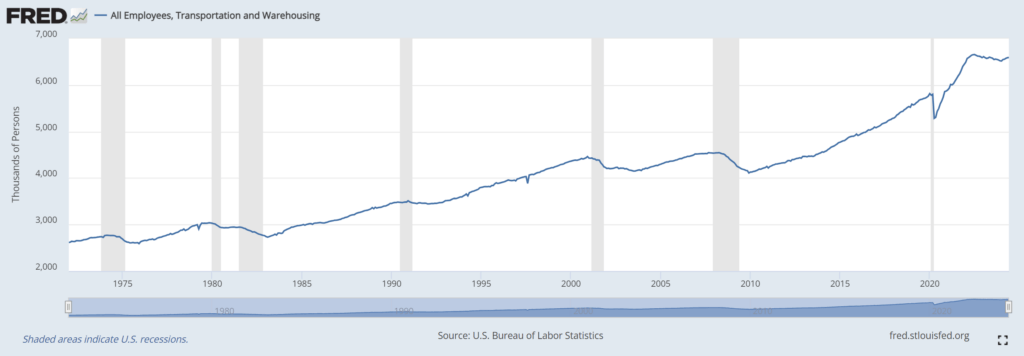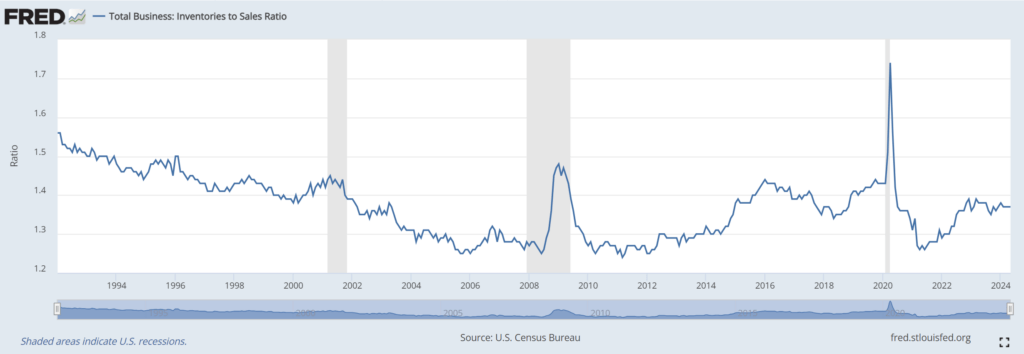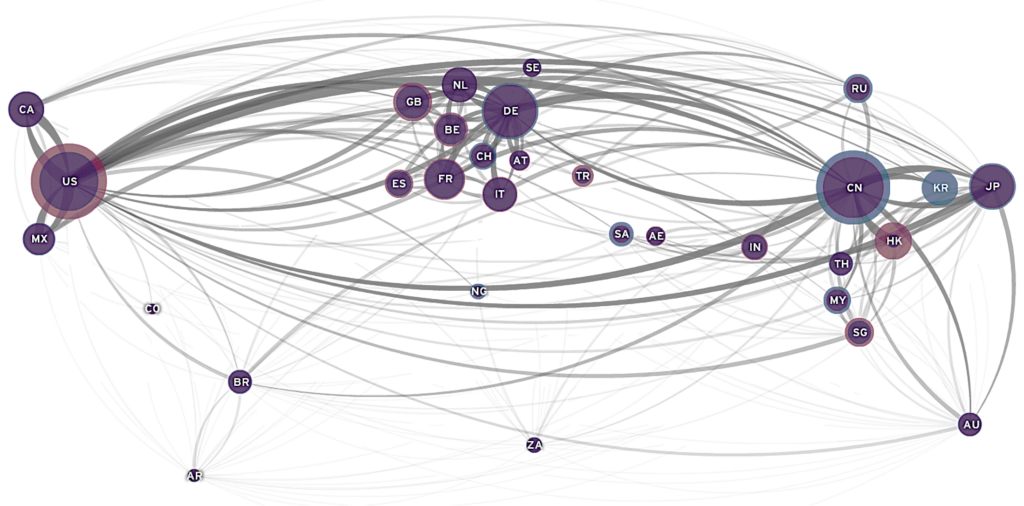Waste in All of Industry
Jul 30, 2024
Everyone is familiar with Taiichi Ohno’s seven wastes in manufacturing processes. But let’s zoom out from the seven wastes that exist in one specific company to the seven wastes that exist in all of U.S. industry — or for whatever country you care to consider because the situation will be the same as that described below.
1. OVERPRODUCTION — Because nearly all production remains batch-and-queue, there is always overproduction that in turn results in discounts and price wars, loss of profits, and the business cycle. Imbalances between supply and demand are a major factor in causing recessions, whose unfavorable impacts are widespread and range from reductions in sales and investment to layoffs and bankruptcies. Recessions are to be avoided. Better synchronizing supply with demand will help avoid recessions.

2. WAITING — Because nearly all production remains batch-and-queue, there will be large amounts of waiting (queue time) between steps in the process from order processing to warehousing and distribution. Think of all the waiting time across supply chains to make decisions on what to order, processing orders, producing orders, inspecting orders, packaging orders, transporting orders, and consuming orders. All of the waiting increases costs.

3. TRANSPORTATION — Because nearly all production remains batch-and-queue, and much of production is globally sourced, the amount of transportation for goods has steadily increased over time as have the number of warehouses. The number of employees serves as a proxy for the increase in the amount of transportation and the number of warehouses.

4. PROCESSING ITSELF — Because nearly all production remains batch-and-queue, processing itself is inefficient. Any change in shape or form is value-added, while all other processing is either non-value-added but necessary or waste. Again, think of all the different types of processing across supply chains that do not result in physical transformation. Much of this is in the form of material handling, which, despite expensive information technologies and automation, consumes vast time and resources. Most of it is waste. And don’t forget about the massive waste of reprocessing returns from online purchases.
5. INVENTORY — Because nearly all production remains batch-and-queue, the total amount of inventory will always exceed sales. In the image below, inventory since 2000 has on average exceeded sales by about 35 percent. This, despite all the advances in information technology, real-time computing, and communication. Better synchronizing supply with demand will reduce high inventories-to-sales ratios and conserve mountains of cash.

6. MOVEMENT — Movement applies not just to workers and parts-in-process in internal production activities, but to shipments of goods as they travel to their destinations either as work-in-process or finished goods. Globalization of trade has reduced local production and trade, thus increasing the length of supply chains. Despite their apparent efficiency, lengthening supply chains is usually the less desirable course of action. As a rule, supply lines should be as short as possible. But because nearly all production remains batch-and-queue, long supply lines appear to be more cost-effective.

7. CREATING DEFECTS — Because nearly all production remains batch-and-queue, the probability of producing defective products is very high. Consequently, defective products abound in every industry segment (as well as every segment of service industries). Defects have the potential to cause injury or death to users, and this necessitates continuous and expensive product recalls, warranty expenses, and costly litigation with injured parties and governments.
WHAT DOES THIS ALL MEAN?
Firstly, there are many more than just seven types of waste (see note below). So, the waste is much greater and more costly than Taiichi Ohno’s seven wastes suggest. One important waste is low employee engagement. As the image below shows, some two-thirds of employees are disengaged from their work. For most, that means show up to work, do your job, and collect your paycheck. It means parking your brain at the front door and doing what you are told. It means don’t recognize problems. It means don’t think and don’t be a creative or innovative problem-solver. Batch-and-queue processing creates myriad big problems to solve! But, business leaders will never solve the problems if they remain committed to batch-and-queue production and the classical management system. They will forever remain stuck in the highest cost methods of both production and management, both of which are least contributive to the development of human ingenuity, knowledge, and capabilities. Isn’t it remarkable that generation after generation of top business leaders see no reason to improve this situation? In fact, they are more likely to continue to make it worse as time progresses due the accretion of solutions that fail to solve the actual problem — poor material and information flow.
The above facts make the business case for CEOs to transition to progressive management; i.e., Toyota production system or its Western derivative interpretation, Lean management. Acting on the business case would be good for business, good for people, and good for the planet.
*In his book Toyota Production System, Taiichi Ohno talked about seven wastes. For many years there has been a great debate over whether or not there is an eighth or ninth waste. Here’s what Ohno-san said about the number of different types of waste (Workplace Management, p. 175): “I don’t know who came up with it but people often talk about ‘the seven types of waste.’ This might have started when the book came out, but waste is not limited to seven types. There’s an old expression” ‘He without bad habits has seven,’ meaning even if you think there is no waste you will find at least seven types. So I came up with overproduction. waiting, etc., but that doesn’t mean there are only seven types. So don’t bother thinking about ‘what type of waste is this?’ Just get on with it and do kaizen.” Here is a further explanation (Shingijutsu-Kaizen, p. 28): “…you should understand that the sensei has in mind that there are 500 or so different abnormalities that might be sensed; they are comprised of the ‘classical’ seven kinds of waste (‘muda’) plus 493 others.”
Original Article: https://bobemiliani.com/waste-in-all-of-industry/
Stay In Touch.
Subscribe to our newsletter and exclusive Leadership content.



